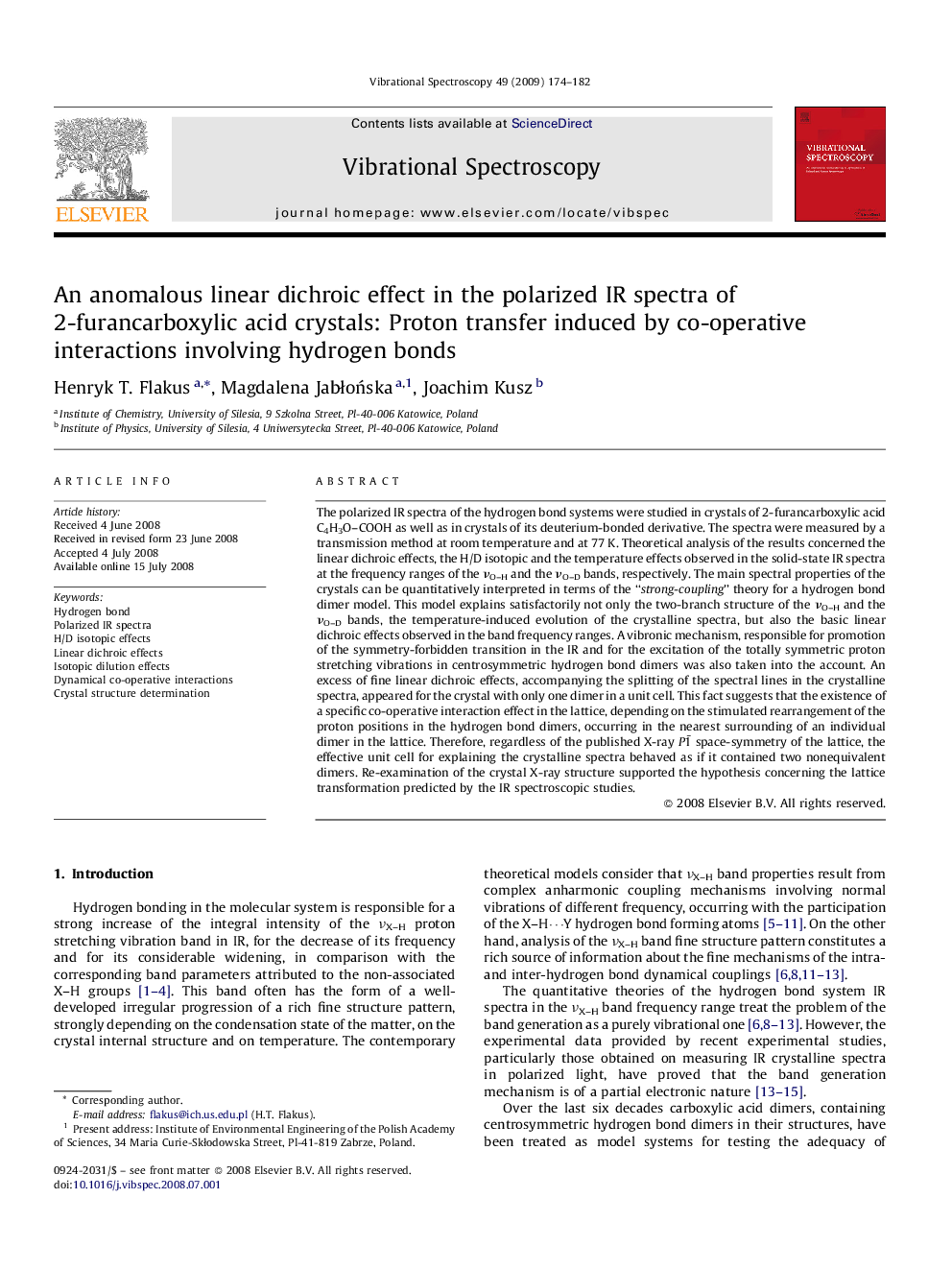| Article ID | Journal | Published Year | Pages | File Type |
|---|---|---|---|---|
| 1250334 | Vibrational Spectroscopy | 2009 | 9 Pages |
Abstract
The polarized IR spectra of the hydrogen bond systems were studied in crystals of 2-furancarboxylic acid C4H3O-COOH as well as in crystals of its deuterium-bonded derivative. The spectra were measured by a transmission method at room temperature and at 77 K. Theoretical analysis of the results concerned the linear dichroic effects, the H/D isotopic and the temperature effects observed in the solid-state IR spectra at the frequency ranges of the νO-H and the νO-D bands, respectively. The main spectral properties of the crystals can be quantitatively interpreted in terms of the “strong-coupling” theory for a hydrogen bond dimer model. This model explains satisfactorily not only the two-branch structure of the νO-H and the νO-D bands, the temperature-induced evolution of the crystalline spectra, but also the basic linear dichroic effects observed in the band frequency ranges. A vibronic mechanism, responsible for promotion of the symmetry-forbidden transition in the IR and for the excitation of the totally symmetric proton stretching vibrations in centrosymmetric hydrogen bond dimers was also taken into the account. An excess of fine linear dichroic effects, accompanying the splitting of the spectral lines in the crystalline spectra, appeared for the crystal with only one dimer in a unit cell. This fact suggests that the existence of a specific co-operative interaction effect in the lattice, depending on the stimulated rearrangement of the proton positions in the hydrogen bond dimers, occurring in the nearest surrounding of an individual dimer in the lattice. Therefore, regardless of the published X-ray P1¯ space-symmetry of the lattice, the effective unit cell for explaining the crystalline spectra behaved as if it contained two nonequivalent dimers. Re-examination of the crystal X-ray structure supported the hypothesis concerning the lattice transformation predicted by the IR spectroscopic studies.
Keywords
Related Topics
Physical Sciences and Engineering
Chemistry
Analytical Chemistry
Authors
Henryk T. Flakus, Magdalena JabÅoÅska, Joachim Kusz,
